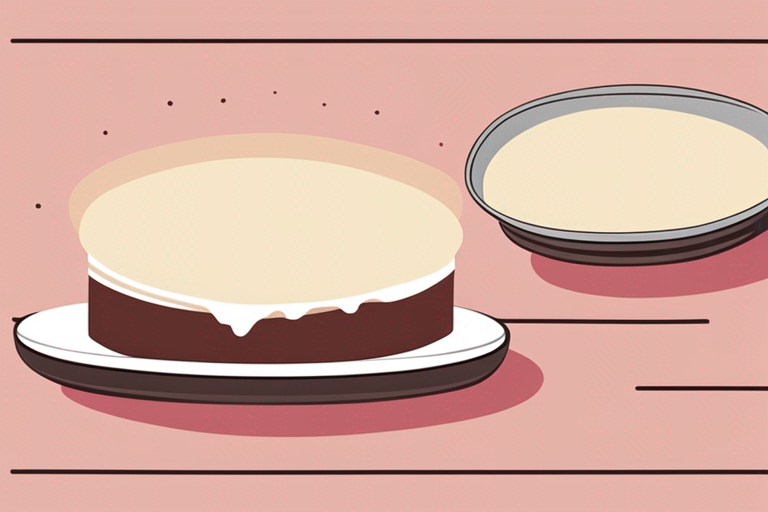
Can You Eat Expired Frosting?
Get Your Free Food Safety Cheat Sheet
30 most common foods with instant answers. Print it and stick it on your fridge—completely free!
Can You Eat Expired Frosting?
Do you have a jar of frosting tucked away in the back of your pantry that you forgot about? Or maybe you found a half-used container of frosting buried in your fridge. You’re probably wondering, can you still use it even if it’s past the expiration date? In this blog post, we’ll delve into the topic of expired frosting and whether it’s safe to consume.
Understanding Expiration Dates on Frosting
When it comes to frosting, most products come with a ‘best by’ or ‘use by’ date stamped on the packaging. It’s essential to understand the difference between these dates:
Best By Date
- The ‘best by’ date is an indicator of when the product is at its peak quality. Consuming the frosting after this date doesn’t necessarily mean it’s unsafe, but the taste and texture may have deteriorated.
Use By Date
- The ‘use by’ date is more critical for perishable items and indicates the last day the product is at its best quality. Consuming the frosting after this date may pose a risk to your health.
Factors to Consider When Evaluating Expired Frosting
Before deciding whether to eat expired frosting, consider the following factors:
Storage Conditions
- How was the frosting stored? If it was consistently kept in the refrigerator or pantry at the right temperature, it may have a longer shelf life.
Packaging Integrity
- Check the frosting container for any signs of damage, such as swelling, leakage, or mold growth. Damaged packaging can compromise the safety of the product.
Smell and Appearance
- Give the frosting a good sniff and look for any unusual odors or discoloration. If it smells off or looks odd, it’s best to discard it.
Safety Tips for Using Expired Frosting
If you’re contemplating using expired frosting, follow these safety tips to minimize the risk of foodborne illness:
-
Check for Signs of Spoilage: Inspect the frosting for any signs of mold, off odors, or unusual texture.
-
Avoid Cross-Contamination: Use clean utensils to scoop out the frosting and prevent introducing harmful bacteria.
-
Refrigerate Properly: If you open a new container of frosting, ensure it’s tightly sealed and stored in the refrigerator to prolong its shelf life.
-
Use Your Senses: Trust your senses when evaluating the quality of the frosting. If in doubt, it’s best to err on the side of caution and discard it.
-
Don’t Risk It: If you have any doubts about the safety of the frosting, it’s safer to throw it away rather than risk food poisoning.
Can You Eat Expired Frosting?
In general, consuming a small amount of expired frosting that shows no signs of spoilage is unlikely to cause harm. However, if the frosting exhibits any of the following characteristics, it’s best to discard it:
- Mold growth
- Unpleasant odor
- Off-color or texture
- Damaged packaging
Remember, it’s always better to be safe than sorry when it comes to food safety. If you’re unsure about the safety of expired frosting, it’s best to play it safe and opt for a fresh container.
Conclusion
While the expiration date on frosting serves as a guideline for quality and safety, it’s essential to use your judgment when deciding whether to consume expired frosting. By considering factors such as storage conditions, packaging integrity, and sensory cues, you can make an informed decision about the safety of the product. When in doubt, it’s best to discard expired frosting to avoid the risk of foodborne illness. Stay vigilant, trust your instincts, and prioritize food safety in your kitchen.

Authoritative Food Safety References
These agencies and university labs inform every tip and health precaution we publish.
USDA FoodKeeper – Cold Storage Guidelines
Official refrigerator, freezer, and pantry timelines maintained by the U.S. Department of Agriculture.
Visit USDA FoodKeeperFDA Produce Safety Rule & Grower Guidance
Field-to-fridge handling practices that prevent contamination of fruits, vegetables, and leafy greens.
Visit FDA Produce SafetyCDC Foodborne Illness Prevention Hub
Surveillance-backed guidance on pathogens, symptoms, and steps to reduce foodborne illness risk.
Visit CDC Food SafetyUC Davis Postharvest Technology Center
University research detailing optimal storage atmospheres for produce after harvest.
Visit UC Davis PostharvestPenn State Extension – Home Food Preservation & Safety
Peer-reviewed extension bulletins on safe canning, chilling, and reheating practices.
Visit Penn State ExtensionHow long does frosting last?
How can you tell if frosting has gone bad?
Can you freeze frosting to extend its shelf life?
Is it safe to eat frosting that has been left out overnight?
Get Your Free Food Safety Cheat Sheet
30 most common foods with instant answers. Print it and stick it on your fridge—completely free! Want more? Upgrade to the complete guide with 70+ foods.
Scan your food directly and get instant safety info using our AI-powered camera feature.